DIY Beef Tallow Soap
Below is a detailed recipe on how you can make simple beef tallow soap at home
9/27/202413 min read
Simple Beef Tallow Soap Recipe: A Nourishing and Natural Cleanser
Making your own soap with beef tallow is a great way to create a natural, nourishing bar that’s gentle on the skin. Tallow is rich in vitamins and fatty acids, closely mimicking the natural oils our skin produces, making it an excellent choice for moisturizing and soothing. This recipe is beginner-friendly, with only a few ingredients needed to create a luxurious soap that can be used daily.
Ingredients:
30 oz (850g) beef tallow (rendered and purified)
4.5 oz (128g) lye (sodium hydroxide)
10 oz (283g) distilled water
2 oz (57g) olive oil (optional, for extra moisturizing properties)
Essential oils (optional, for fragrance – about 15-20 drops)
Lavender, tea tree, eucalyptus, or any preferred scent
Add-ins (optional, for exfoliation or decoration)
Oats, dried herbs, or activated charcoal
Tools Needed:
Safety gear: gloves, goggles, and long sleeves
Digital scale (to weigh ingredients accurately)
Thermometer (to measure temperature of the lye and oils)
Stick blender (for mixing)
Heatproof containers (for mixing the lye and oils)
Silicone or wooden soap mold (or a loaf pan lined with parchment paper)
Spatula (for stirring)
Measuring cups and spoons
Step-by-Step Instructions:
1. Prepare Your Work Area and Gear
Safety First: Lye is a caustic substance, so be sure to wear protective gloves, goggles, and long sleeves to avoid skin contact. Work in a well-ventilated area.
Gather Materials: Have all your ingredients and tools ready and within reach. Line your soap mold with parchment paper if you’re using a non-silicone mold.
2. Measure Ingredients
Weigh the Beef Tallow: Use a digital scale to accurately measure 30 oz (850g) of beef tallow. If you’re using raw beef fat, ensure it is rendered and purified before starting.
Measure the Lye and Water: Weigh 4.5 oz (128g) of lye and 10 oz (283g) of distilled water separately. It’s essential to measure these precisely to ensure the soap sets correctly.
3. Prepare the Lye Solution
Mix Lye and Water: In a heatproof container, slowly pour the lye into the distilled water (never pour water into lye). Stir gently until the lye is fully dissolved. This mixture will heat up quickly, so let it sit until it cools to around 100°F (38°C).
Tip: Always add lye to water, not the other way around, to avoid a dangerous chemical reaction.
4. Melt the Beef Tallow and Oils
Heat the Tallow: In a large pot or heatproof container, gently melt the beef tallow over low heat until it becomes a liquid. If you are adding olive oil (optional for extra moisturizing properties), add it to the melted tallow and stir to combine.
Cool to Temperature: Once melted, remove the tallow from the heat and let it cool to about 100°F (38°C), the same temperature as the lye solution.
5. Combine Lye and Oils
Mix Lye into Oils: When both the lye solution and the melted tallow are around 100°F, slowly pour the lye mixture into the tallow, stirring continuously. Be sure to use a heatproof container and work slowly to avoid splashing.
6. Blend to Trace
Use a Stick Blender: Once the lye and oils are combined, use a stick blender to mix the soap until it reaches “trace.” Trace is when the mixture thickens to a pudding-like consistency and leaves a visible trail when drizzled across the surface.
Tip: If you are adding essential oils or other ingredients (like oats or dried herbs), mix them in after the soap reaches trace.
7. Add Essential Oils and Add-ins (Optional)
Fragrance and Exfoliation: If desired, add 15-20 drops of essential oils (like lavender, tea tree, or eucalyptus) for fragrance. You can also add natural exfoliants like oats, dried herbs, or activated charcoal at this stage.
Stir Thoroughly: Mix the essential oils and any add-ins into the soap mixture until evenly distributed.
8. Pour into Mold
Transfer to Mold: Once everything is mixed, pour the soap into your prepared mold. Use a spatula to scrape out every last bit of the mixture.
Smooth the Top: Tap the mold gently on a flat surface to remove any air bubbles. Smooth the top with a spatula if needed.
9. Let the Soap Set
Cure for 24-48 Hours: Allow the soap to harden in the mold for 24-48 hours. During this time, it will continue to saponify (turn into soap). Avoid moving the mold too much to prevent cracking.
10. Unmold and Cure
Remove from Mold: After 1-2 days, carefully remove the soap from the mold. If using a loaf mold, cut the soap into bars with a sharp knife.
Cure for 4-6 Weeks: Place the soap bars in a well-ventilated area to cure for 4-6 weeks. Turn the bars every few days to ensure even drying. This curing process allows the soap to harden and the lye to fully neutralize, making it safe for use.
How to Use and Store Your Beef Tallow Soap:
Usage: Once cured, your homemade beef tallow soap is ready for use! It will be gentle, moisturizing, and perfect for sensitive or dry skin.
Storage: Store the soap in a cool, dry place. To extend the life of each bar, keep it on a well-draining soap dish between uses to prevent it from sitting in water.
Optional Customizations:
Add Essential Oils for Skin Benefits: Lavender for calming, tea tree for antibacterial, or peppermint for an invigorating scent.
Exfoliants: Add oats, ground coffee, or dried herbs for a gentle exfoliation experience.
Colorants: Use natural colorants like activated charcoal, turmeric, or spirulina to give your soap bars a beautiful, natural hue.
Why Use Beef Tallow in Soap?
Beef tallow is a traditional ingredient in soap-making, valued for its ability to produce a hard, long-lasting bar of soap with a rich, creamy lather. It closely resembles the fatty acids in human skin, making it deeply nourishing and moisturizing. Additionally, tallow is a sustainable choice, as it repurposes animal fat that might otherwise go to waste.
Enjoy your homemade beef tallow soap!
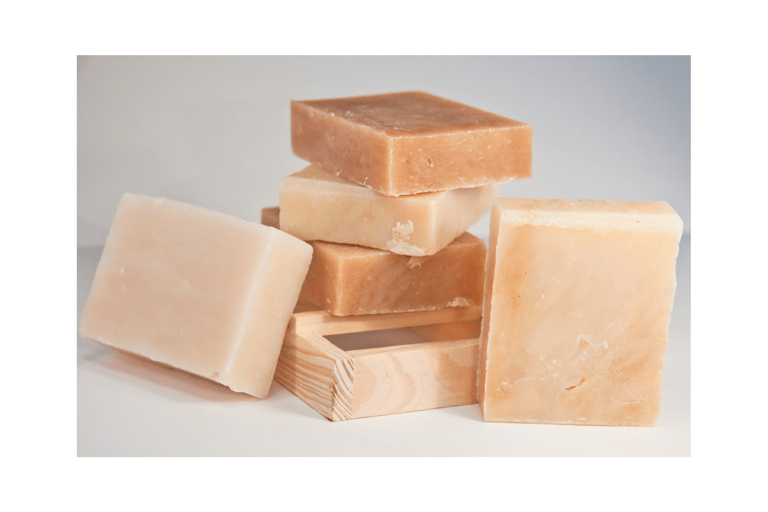

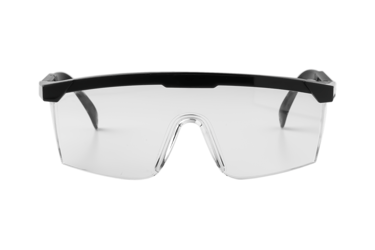

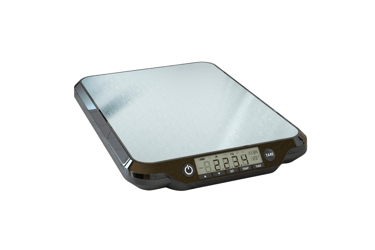

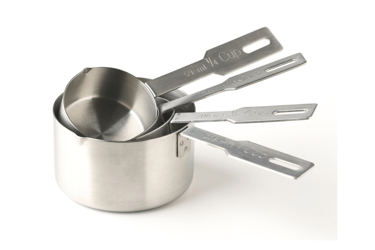

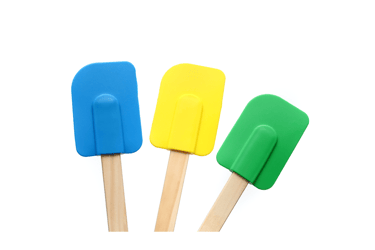





Simple Beef Tallow Soap Recipe: A Nourishing and Natural Cleanser
Making your own soap with beef tallow is a great way to create a natural, nourishing bar that’s gentle on the skin. Tallow is rich in vitamins and fatty acids, closely mimicking the natural oils our skin produces, making it an excellent choice for moisturizing and soothing. This recipe is beginner-friendly, with only a few ingredients needed to create a luxurious soap that can be used daily.
Ingredients:
30 oz (850g) beef tallow (rendered and purified)
4.5 oz (128g) lye (sodium hydroxide)
10 oz (283g) distilled water
2 oz (57g) olive oil (optional, for extra moisturizing properties)
Essential oils (optional, for fragrance – about 15-20 drops)
Lavender, tea tree, eucalyptus, or any preferred scent
Add-ins (optional, for exfoliation or decoration)
Oats, dried herbs, or activated charcoal
Tools Needed:
Safety gear: gloves, goggles, and long sleeves
Digital scale (to weigh ingredients accurately)
Thermometer (to measure temperature of the lye and oils)
Stick blender (for mixing)
Heatproof containers (for mixing the lye and oils)
Silicone or wooden soap mold (or a loaf pan lined with parchment paper)
Spatula (for stirring)
Measuring cups and spoons
Step-by-Step Instructions:
1. Prepare Your Work Area and Gear
Safety First: Lye is a caustic substance, so be sure to wear protective gloves, goggles, and long sleeves to avoid skin contact. Work in a well-ventilated area.
Gather Materials: Have all your ingredients and tools ready and within reach. Line your soap mold with parchment paper if you’re using a non-silicone mold.
2. Measure Ingredients
Weigh the Beef Tallow: Use a digital scale to accurately measure 30 oz (850g) of beef tallow. If you’re using raw beef fat, ensure it is rendered and purified before starting.
Measure the Lye and Water: Weigh 4.5 oz (128g) of lye and 10 oz (283g) of distilled water separately. It’s essential to measure these precisely to ensure the soap sets correctly.
3. Prepare the Lye Solution
Mix Lye and Water: In a heatproof container, slowly pour the lye into the distilled water (never pour water into lye). Stir gently until the lye is fully dissolved. This mixture will heat up quickly, so let it sit until it cools to around 100°F (38°C).
Tip: Always add lye to water, not the other way around, to avoid a dangerous chemical reaction.
4. Melt the Beef Tallow and Oils
Heat the Tallow: In a large pot or heatproof container, gently melt the beef tallow over low heat until it becomes a liquid. If you are adding olive oil (optional for extra moisturizing properties), add it to the melted tallow and stir to combine.
Cool to Temperature: Once melted, remove the tallow from the heat and let it cool to about 100°F (38°C), the same temperature as the lye solution.
5. Combine Lye and Oils
Mix Lye into Oils: When both the lye solution and the melted tallow are around 100°F, slowly pour the lye mixture into the tallow, stirring continuously. Be sure to use a heatproof container and work slowly to avoid splashing.
6. Blend to Trace
Use a Stick Blender: Once the lye and oils are combined, use a stick blender to mix the soap until it reaches “trace.” Trace is when the mixture thickens to a pudding-like consistency and leaves a visible trail when drizzled across the surface.
Tip: If you are adding essential oils or other ingredients (like oats or dried herbs), mix them in after the soap reaches trace.
7. Add Essential Oils and Add-ins (Optional)
Fragrance and Exfoliation: If desired, add 15-20 drops of essential oils (like lavender, tea tree, or eucalyptus) for fragrance. You can also add natural exfoliants like oats, dried herbs, or activated charcoal at this stage.
Stir Thoroughly: Mix the essential oils and any add-ins into the soap mixture until evenly distributed.
8. Pour into Mold
Transfer to Mold: Once everything is mixed, pour the soap into your prepared mold. Use a spatula to scrape out every last bit of the mixture.
Smooth the Top: Tap the mold gently on a flat surface to remove any air bubbles. Smooth the top with a spatula if needed.
9. Let the Soap Set
Cure for 24-48 Hours: Allow the soap to harden in the mold for 24-48 hours. During this time, it will continue to saponify (turn into soap). Avoid moving the mold too much to prevent cracking.
10. Unmold and Cure
Remove from Mold: After 1-2 days, carefully remove the soap from the mold. If using a loaf mold, cut the soap into bars with a sharp knife.
Cure for 4-6 Weeks: Place the soap bars in a well-ventilated area to cure for 4-6 weeks. Turn the bars every few days to ensure even drying. This curing process allows the soap to harden and the lye to fully neutralize, making it safe for use.
How to Use and Store Your Beef Tallow Soap:
Usage: Once cured, your homemade beef tallow soap is ready for use! It will be gentle, moisturizing, and perfect for sensitive or dry skin.
Storage: Store the soap in a cool, dry place. To extend the life of each bar, keep it on a well-draining soap dish between uses to prevent it from sitting in water.
Optional Customizations:
Add Essential Oils for Skin Benefits: Lavender for calming, tea tree for antibacterial, or peppermint for an invigorating scent.
Exfoliants: Add oats, ground coffee, or dried herbs for a gentle exfoliation experience.
Colorants: Use natural colorants like activated charcoal, turmeric, or spirulina to give your soap bars a beautiful, natural hue.
Why Use Beef Tallow in Soap?
Beef tallow is a traditional ingredient in soap-making, valued for its ability to produce a hard, long-lasting bar of soap with a rich, creamy lather. It closely resembles the fatty acids in human skin, making it deeply nourishing and moisturizing. Additionally, tallow is a sustainable choice, as it repurposes animal fat that might otherwise go to waste.
Enjoy your homemade beef tallow soap!










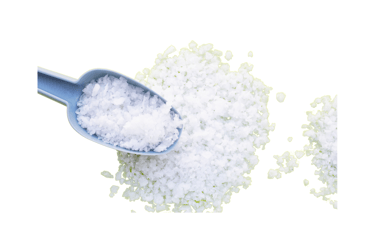

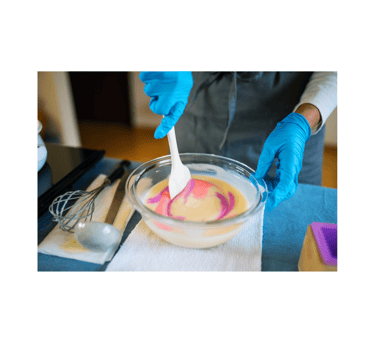

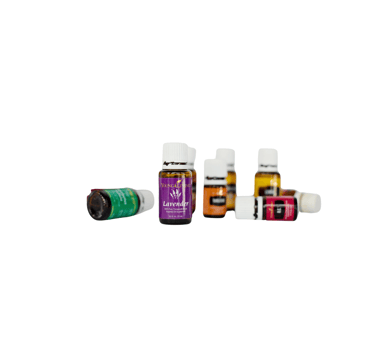

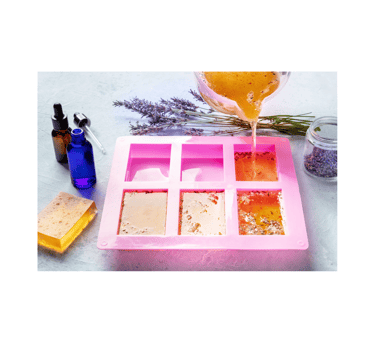

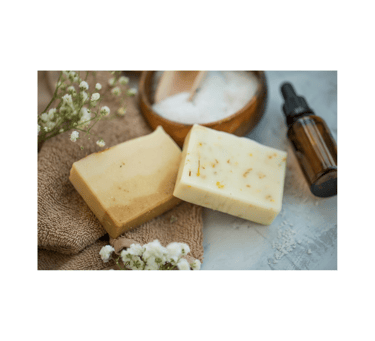

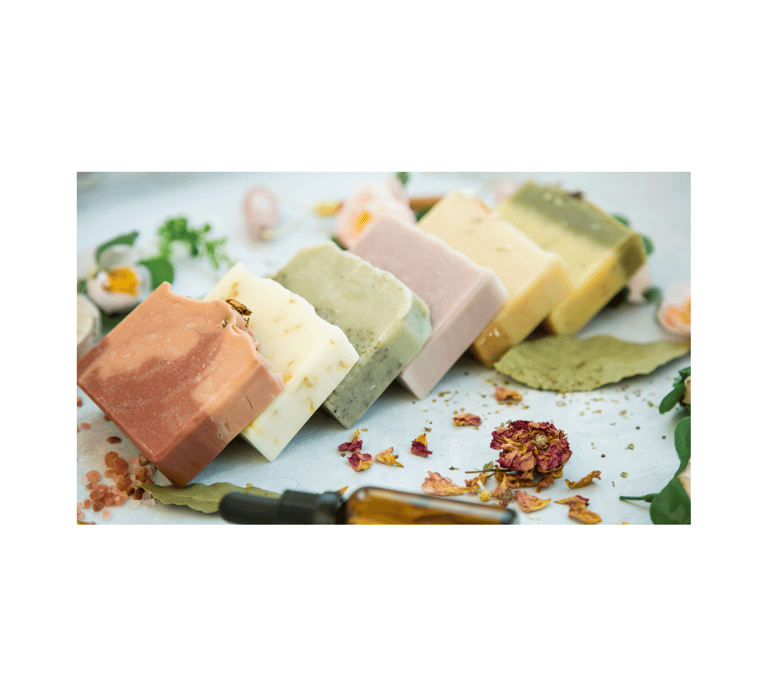

Simple Beef Tallow Soap Recipe: A Nourishing and Natural Cleanser
Making your own soap with beef tallow is a great way to create a natural, nourishing bar that’s gentle on the skin. Tallow is rich in vitamins and fatty acids, closely mimicking the natural oils our skin produces, making it an excellent choice for moisturizing and soothing. This recipe is beginner-friendly, with only a few ingredients needed to create a luxurious soap that can be used daily.
Ingredients:
30 oz (850g) beef tallow (rendered and purified)
4.5 oz (128g) lye (sodium hydroxide)
10 oz (283g) distilled water
2 oz (57g) olive oil (optional, for extra moisturizing properties)
Essential oils (optional, for fragrance – about 15-20 drops)
Lavender, tea tree, eucalyptus, or any preferred scent
Add-ins (optional, for exfoliation or decoration)
Oats, dried herbs, or activated charcoal
Tools Needed:
Safety gear: gloves, goggles, and long sleeves
Digital scale (to weigh ingredients accurately)
Thermometer (to measure temperature of the lye and oils)
Stick blender (for mixing)
Heatproof containers (for mixing the lye and oils)
Silicone or wooden soap mold (or a loaf pan lined with parchment paper)
Spatula (for stirring)
Measuring cups and spoons
Step-by-Step Instructions:
1. Prepare Your Work Area and Gear
Safety First: Lye is a caustic substance, so be sure to wear protective gloves, goggles, and long sleeves to avoid skin contact. Work in a well-ventilated area.
Gather Materials: Have all your ingredients and tools ready and within reach. Line your soap mold with parchment paper if you’re using a non-silicone mold.
2. Measure Ingredients
Weigh the Beef Tallow: Use a digital scale to accurately measure 30 oz (850g) of beef tallow. If you’re using raw beef fat, ensure it is rendered and purified before starting.
Measure the Lye and Water: Weigh 4.5 oz (128g) of lye and 10 oz (283g) of distilled water separately. It’s essential to measure these precisely to ensure the soap sets correctly.
3. Prepare the Lye Solution
Mix Lye and Water: In a heatproof container, slowly pour the lye into the distilled water (never pour water into lye). Stir gently until the lye is fully dissolved. This mixture will heat up quickly, so let it sit until it cools to around 100°F (38°C).
Tip: Always add lye to water, not the other way around, to avoid a dangerous chemical reaction.
4. Melt the Beef Tallow and Oils
Heat the Tallow: In a large pot or heatproof container, gently melt the beef tallow over low heat until it becomes a liquid. If you are adding olive oil (optional for extra moisturizing properties), add it to the melted tallow and stir to combine.
Cool to Temperature: Once melted, remove the tallow from the heat and let it cool to about 100°F (38°C), the same temperature as the lye solution.
5. Combine Lye and Oils
Mix Lye into Oils: When both the lye solution and the melted tallow are around 100°F, slowly pour the lye mixture into the tallow, stirring continuously. Be sure to use a heatproof container and work slowly to avoid splashing.
6. Blend to Trace
Use a Stick Blender: Once the lye and oils are combined, use a stick blender to mix the soap until it reaches “trace.” Trace is when the mixture thickens to a pudding-like consistency and leaves a visible trail when drizzled across the surface.
Tip: If you are adding essential oils or other ingredients (like oats or dried herbs), mix them in after the soap reaches trace.
7. Add Essential Oils and Add-ins (Optional)
Fragrance and Exfoliation: If desired, add 15-20 drops of essential oils (like lavender, tea tree, or eucalyptus) for fragrance. You can also add natural exfoliants like oats, dried herbs, or activated charcoal at this stage.
Stir Thoroughly: Mix the essential oils and any add-ins into the soap mixture until evenly distributed.
8. Pour into Mold
Transfer to Mold: Once everything is mixed, pour the soap into your prepared mold. Use a spatula to scrape out every last bit of the mixture.
Smooth the Top: Tap the mold gently on a flat surface to remove any air bubbles. Smooth the top with a spatula if needed.
9. Let the Soap Set
Cure for 24-48 Hours: Allow the soap to harden in the mold for 24-48 hours. During this time, it will continue to saponify (turn into soap). Avoid moving the mold too much to prevent cracking.
10. Unmold and Cure
Remove from Mold: After 1-2 days, carefully remove the soap from the mold. If using a loaf mold, cut the soap into bars with a sharp knife.
Cure for 4-6 Weeks: Place the soap bars in a well-ventilated area to cure for 4-6 weeks. Turn the bars every few days to ensure even drying. This curing process allows the soap to harden and the lye to fully neutralize, making it safe for use.
How to Use and Store Your Beef Tallow Soap:
Usage: Once cured, your homemade beef tallow soap is ready for use! It will be gentle, moisturizing, and perfect for sensitive or dry skin.
Storage: Store the soap in a cool, dry place. To extend the life of each bar, keep it on a well-draining soap dish between uses to prevent it from sitting in water.
Optional Customizations:
Add Essential Oils for Skin Benefits: Lavender for calming, tea tree for antibacterial, or peppermint for an invigorating scent.
Exfoliants: Add oats, ground coffee, or dried herbs for a gentle exfoliation experience.
Colorants: Use natural colorants like activated charcoal, turmeric, or spirulina to give your soap bars a beautiful, natural hue.
Why Use Beef Tallow in Soap?
Beef tallow is a traditional ingredient in soap-making, valued for its ability to produce a hard, long-lasting bar of soap with a rich, creamy lather. It closely resembles the fatty acids in human skin, making it deeply nourishing and moisturizing. Additionally, tallow is a sustainable choice, as it repurposes animal fat that might otherwise go to waste.
Enjoy your homemade beef tallow soap!


